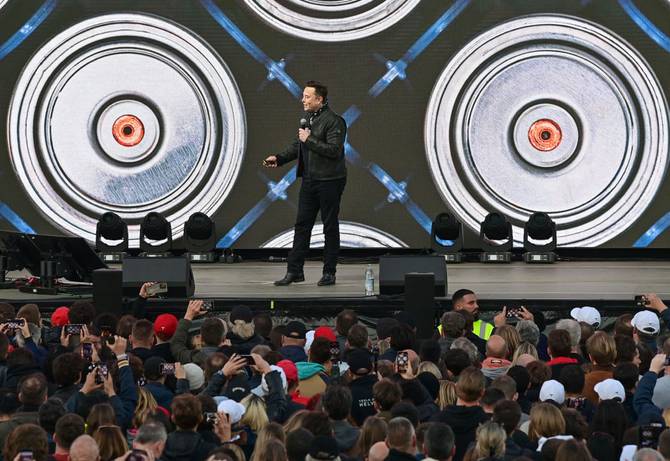Happy Wednesday. Last Saturday, a bunch of autonomous vehicles raced around the Indy 500 track for a $1 million prize. Teams were given the same Formula 1–esque car to outfit with sensors, code, and cameras.
It may have been the first such competition at the Indianapolis Motor Speedway, but it’s not the first competition of its kind—DARPA has been running AV racing challenges since 2004.
In today’s edition:
 Carbon capture Carbon capture
 Tesla battery divergence Tesla battery divergence
 Facebook Papers roundup Facebook Papers roundup
—Grace Donnelly, Dan McCarthy
|
|
|
CarbonCapture
To keep the planet from warming to more dangerous levels, humanity will not only need to avoid new carbon emissions whenever possible, but also to remove carbon dioxide from the atmosphere.
One way to do this? Direct-air-capture (DAC) tech, which pulls CO2—you guessed it—directly out of the air, so it can be stored somewhere else. But the high cost of DAC today means few companies currently use it.
- As of June 2020, 15 DAC plants around the world are removing less than 10,000 metric tons of CO2 from the atmosphere each year, according to the IEA.
-
To avoid warming the planet by more than 2 degrees celsius, negative-emissions technologies, of which DAC is just one, need to be removing billions by 2050.
Enter...Carbon Capture Inc., which says it has a cheaper way to achieve negative emissions. Last week, CarbonCapture raised $35 million in a Series A round led by Prime Movers Lab and named Adrian Corless its new CEO. Corless previously worked at Carbon Engineering, one of the three early DAC companies, along with Climeworks and Global Thermostat.
- The Los Angeles-based startup plans to use the funding to accelerate its production development and deploy its initial DAC systems in the US.
“We do have competitors, but the need to scale is far beyond even what the few of us can probably accomplish,” Corless told Emerging Tech Brew.
Out of thin air...
CarbonCapture uses zeolites—an abundant, stable, and low-cost mineral—to absorb CO2. While zeolites are already mass-produced for other industrial applications, CarbonCapture is the first to use them for DAC. Its process uses shipping-container-sized modules with fans that pull air in through the zeolites and dehumidify it, resulting in the bonus byproduct of purified water, and leaving the CO2.
The company is about two years away from commercializing its tech, but it’s partnering with mining giant Rio Tinto to use its DAC system at the Tamarack nickel mine, which is in Minnesota and operated by Talon Metals.
- CarbonCapture plans to store the CO2 it pulls out of the air in basalt-based minerals the mine extracts, and being on-site will make that integration cheaper.
“That’s happening all the time. It just happens over thousands of years,” Corless said. “You can accelerate that by basically crushing that material, making it finer, and then putting it in contact with higher concentrations of CO2. You can take that thousands of years and bring it down to sort of hours or days.”
Click here to read the full story.—GD
|
|
|
Picture Alliance/Getty Images
Over the last week, we’ve gotten some more clues about how the world’s newest $1 trillion company plans to reach its ambitious battery goals.
Last week, Tesla announced that it would begin using lithium iron phosphate (LFP) batteries in all of its standard-range EVs, and on Monday supplier Panasonic shared that a new advanced battery with five times the storage capacity of Tesla’s current battery cells is moving closer to production.
Why it matters: These developments are the most we’ve learned so far about Tesla’s strategy to build more powerful and more affordable batteries, following grand statements from CEO Elon Musk at the company’s “Battery Day” in September 2020.
Iron advantage: LFP battery chemistry is significantly cheaper than lithium-ion batteries, and doesn’t use nickel and cobalt, but it also packs less energy density, resulting in lower EVs ranges.
- The estimated range for the Tesla Model 3 SR+ with an LFP battery is 253 miles, compared with 263 miles with the current nickel-cobalt-aluminum battery.
-
While the average cost of EV batteries was about $137 per kWh in 2020, per BloombergNEF, LFPs were priced at about $80 per kWh.
Tesla is already producing vehicles with LFP batteries at its factory in Shanghai, which it sells in Asia and Europe.
Better, faster, cheaper: At the same time that Tesla is shifting toward more affordable batteries, the company is also working with Panasonic to develop more powerful cells for other models.
Panasonic revealed a prototype of the 4680 battery on Monday—a version of the cylindrical cells Tesla uses that are 46 mm wide and 80 mm tall, compared with the current 21x70mm iteration.
- This battery will store about five times more energy, increasing EV range by more than 50%.
- Panasonic intends to begin test production of the 4680 battery cells in Japan by March 2022.
Big picture: Musk sees Tesla’s growing expertise in battery manufacturing as a significant competitive advantage. From the 4680 to the company’s solar-energy battery products, there’s plenty of room to grow Tesla’s energy storage business in an electrified future.
Click here to read the full story.—GD
|
|
|
On this glorious hump day, we bring you good news: Stablecoin deposit rates are increasing with BlockFi. *AIR HORNS*
BlockFi is upping APY rates on all Stablecoins including BUSD, DAI, PAX, USDC, and more, all held in the interest accounts they offer on their platform. The actual numbers: Tier 1 Stablecoins are going from 8% APY to 8.25%, and Tier 2 Stablecoins are rising from 5% to 7% APY.
You can also use BlockFi’s Trading with ACH capability, which can make it easier to get started with a BlockFi Interest Account (BIA) and ensuing trading.
And while that interest is churnin’ away in your BIA, new and eligible users who make a purchase with a BlockFi Rewards Credit Card get a cool $25 GUSD back on their first transaction. Just use code partnercard25 to start.
A happy hump day indeed.
Get started with BlockFi here.
|
|
|
Francis Scialabba
In mid-September, the Wall Street Journal published a series of investigative pieces about Facebook, based on extensive documentation leaked to them by the now-identified whistleblower Frances Haugen.
Since then...Haugen has also provided the trove of internal Facebook documents to journalists across 17 newsrooms (a number that is growing), leading to a deluge of reports on the company this week.
We curated a quick reading list based on the most relevant stuff for you, the emerging tech reader:
While we’re here: Facebook reported Q3 earnings on Monday, and its quarterly revenue rose 35% year over year to $29 billion. It made $9.2 billion in profit. Despite young people leaving the platform, media scrutiny, and regulatory ire...Facebook continues to print money.—DM
|
|
|
|
The business of bug bounties. When someone discovers a flaw in a tech product, they can either exploit it (which would be illegal), or let the product creator know and perhaps collect a bug bounty. There are people around the world who find bugs in big companies’ software—and make big bucks for it. That’s because it’s well worth it; successful attacks that utilize previously undiscovered vulnerabilities can ruin a company’s reputation and easily cost millions of dollars in damages. Read more about why the cash-for-bugs business is booming.
|
|
|
Ian McKinnon
Stat: The top 10,000 individual Bitcoin owners hodl ~33% of the BTC out there, per a new National Bureau of Economic Research study.
Quote: “This is expected to be a completely new sort of aviation market.”—Richard Wang, CEO of battery maker Cuberg, on electric aviation to Emerging Tech Brew
Read: A report on venture capital investment in “Tough Tech,” aka emerging technologies that are a bit further off from commercialization.
Covid changed the contact center: The space has evolved big time during the pandemic to adapt to shifting organizational needs and customer expectations. Find out more about those seismic changes in this webinar from Dialpad, Intercom, and CareLinx.*
*This is sponsored advertising content
|
|
-
Nigeria rolled out its central bank digital currency, the eNaira.
-
Amazon is now the cloud-computing provider for the UK’s spy agencies.
-
General Motors says it will build 40,000 EV charging stations in the US and Canada, as a part of its $750 million EV infrastructure push.
-
Verizon and Amazon’s Project Kuiper have teamed up to provide satellite broadband services to rural areas.
-
UK schools planning to use facial recognition to facilitate students’ lunch payments have decided against it after public and regulatory scrutiny.
|
|
It’s been a big week for Tesla. How up to date are you on the $1 trillion automaker?
Click here to take the quiz.
|
|
An Oxford University working paper suggests that, if adoption of solar photovoltaics, wind power, batteries, and hydrogen electrolyzer continues its current exponential trend, we will “achieve a near-net-zero emissions energy system within 25 years.”
- The cost of fossil fuels is rising, while the cost of most renewables is plunging.
- The paper assumes renewable costs will fall further, in line with Wright’s Law, an economic framework that says production costs fall exponentially as manufacturers gain more experience making the good or service.
|
|
|
Written by
Grace Donnelly and Dan McCarthy
Was this email forwarded to you? Sign up
here.
|
ADVERTISE
//
CAREERS
//
SHOP
//
FAQ
Update your email preferences or unsubscribe
here.
View our privacy policy
here.
Copyright ©
2021
Morning Brew. All rights reserved.
22 W 19th St, 8th Floor, New York, NY 10011
|
|









